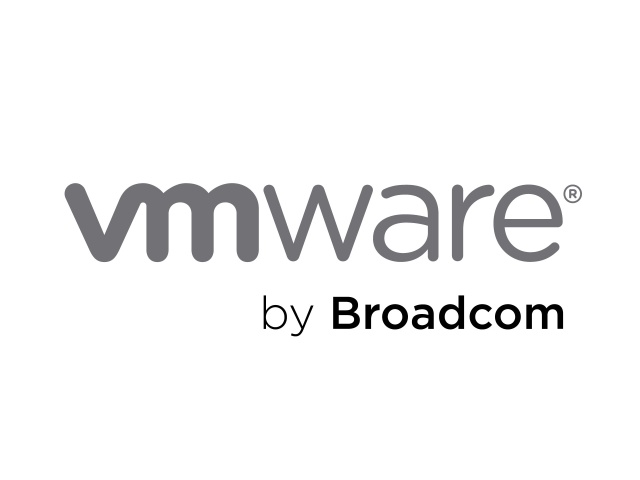If “cloud first” is the new normal, why don’t we just build our data centres that way?
If you’ve read our predictions for 2024, then you’ll know that there’s a recurring theme in there. We really believe we’re at one of those points of inflection that come along in IT every few years - and that inflection point will change the way we build on prem. Infrastructure - forever.
Read on, and I’ll explain why.
Cloud as the application model is the new normal
As we talk some more about in our previous post “When I’m sixty-four…”, the new normal for application development is to build them “cloud first”, able to be deployed anywhere, easily scale, be resilient and secure. In the past building apps this way almost always meant that some or all of your deployment was going to live on public cloud. And if you had existing apps and data on-prem they were merely in the “digital transformation” queue, waiting to be refactored so they could move there too.
No more.
For most larger organisations, especially ones that have been around for more than a minute, they’ve come to the more rational conclusion that some workloads and data are never moving to public cloud - whether for performance, security, privacy or cost - or simply because, in the case of a mainframe running back office tasks, for example, it just doesn’t make any sense.
So if cloud, the model, is the new normal - we now have an opportunity to rethink how we build on-prem, ground up, to make cloud - the place, anywhere and everywhere we want it to be.
Early attempts at private clouds were incomplete
Early attempts to build on-prem infrastructure to just run cloud apps, did a poor job. Software solutions focusing almost entirely on delivering the environment to deliver and elastic application layer conveniently glossed over the reality that there’s a whole heap of complex hardware and connective tissue required to deliver that environment. And get it wrong at install or in its subsequent lifecycle management and you’re likely to bring the whole thing crashing to the ground. It was a too fragmented, too complex an approach that could never deliver the true cloud experience of simplicity, elasticity, resilience and security that public cloud could.
Not only did they gloss over the required infrastructure and its challenges, they also ignored those workloads and applications that were never destined for public cloud. Rather than embrace them and incorporate them into a comprehensive IT strategy, they were sidelined, sitting on older platforms and architectures, often becoming increasingly big issues in IT’s Risk Register, with little or no forward path for them identified.
True Private Cloud defined
For us then, we believe that a true private cloud, fit for today’s new normal, isn’t merely an outpost, subset of what you can get from a hyperscaler.
It’s more than that.
A true private cloud takes all that is good about the public cloud experience, and combines that with the practical reality of everything going on in today’s on-prem infrastructure, to not only provide an optimal way to run cloud architected applications, but also address the real world pain points that come from running your own IT infrastructure.
Issues like:
- Time to value from planning, installation and testing new infrastructure
- Lifecycle management, including software and security upgrades and patches
- Hardware replacement and expansion
- A global lack of skilled IT resources, compounded by the sheer variety of skills required to design and operate traditional IT infrastructure
- A mountain of technical debt sitting on the IT Risk Register from siloed and out of support technologies on which the organisation still relies, but that have little or no place in a public cloud
- Back office systems reliant on mainframes and databases that will never move to the cloud
A true private cloud takes what is great about the cloud, its simplicity, resilience, elasticity and security and embraces, rather than ignores the unique environment in which it sits.
HyperCloud transforms on premises IT infrastructure
A true private cloud then, delivers a forward looking strategy for broad swathes of on prem. infrastructure. It becomes the place where, over time, almost everything can be consolidated. And, as legacy hardware ages out and/or software and support licenses come due for renewal, they can be discarded and consolidated as just another instance within your private cloud, with little to no additional complexity overhead.
In fact, as every silo is removed and consolidated within HyperCloud, your on prem infrastructure gets;
- Simpler, as you still only have one HyperCloud to manage, another legacy silo gone, and a dramatic reduction in the skills required to operate and support it.
- More resilient, as at a hardware level, the more physical nodes you add to HyperCloud the smaller failure domains become and, at a software level, your ability to replicate, scale, backup and restore is simplified and unified.
- More elastic, as you exercise HyperCloud’s true cloud architecture, calling upon additional processing and/or storage on-demand to support growing dynamic workloads.
- More secure, as out of support hardware and software is replaced by HyperCloud and its single patch lifecycle management and CVE remediation. And, of course, that’s also one less silo that must be audited and patched.
- More efficient, as older, likely poorly utilised silos of technology are consolidated onto the shared, super efficient, platform that is HyperCloud. Indeed, it may even be possible to bring some workloads across to HyperCloud without any new capital investment being required.
HyperCloud: A “cloud-native bridge”
Transforming your IT infrastructure into a true private cloud also affords you the opportunity to deliver a perfect bridge between that new normal of cloud application delivery and on-prem applications and data that have not, and may never, move to the public cloud.
Let’s take mainframes as an example.
Still the backbone of many backoffice and ERP type applications, especially in organisations that tend to be highly regulated, like healthcare and financial services, there are still many use cases where data needs to traverse between the mainframe and cloud native applications (whether running internally as part of a private cloud, or in a hybrid model) - and likely this requirement will only grow.
HyperCloud’s templating and marketplace capabilities enable the integration work between mainframe and cloud-native to be completed (and fully tested) just once. That integration can then be provided as a template within the organisation’s private marketplace, allowing for single click deployment that the cloud-native development team can then utilise - without ever having to touch or understand the mainframe itself.
A true private cloud is not just a “mini public cloud”
I hope in this post I’ve demonstrated the difference. A true private cloud isn’t just a pale imitation of what can be achieved in the public cloud from which it stems. It should absolutely deliver the experience of cloud, but also embrace the realities of why data and workloads sometimes need to stay on premises - and be optimised to support that, along with the inevitable physical infrastructure that comes along with it.
Today, in our opinion, that means there’s really only one choice to achieve all of this.





